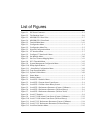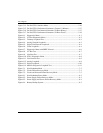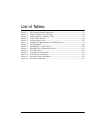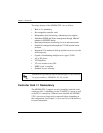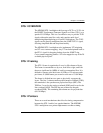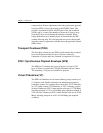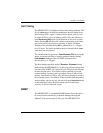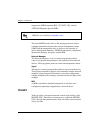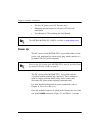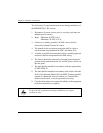
Chapter 1. Introduction
61200659L1-1 MX2800 STS-1 User Manual 1-5
Unit Timing
The MX2800 STS-1 multiplexer allows three timing methods. The
first is
L
OOP
timed, in which the multiplexer derives timing from
the incoming STS-1 signal. A failure in this signal, such as a loss-
of-signal (LOS) or a loss-of-framing (LOF) will cause the unit to
enter
H
OLDOVER
(HO)
mode for the duration of the receive signal
defect. During
HO
, the unit will continue transmitting at the same
rate as the receive signal prior to entering its defect condition.
Stability of the transmit during
HO
is guaranteed to +/- 4.9 ppm
over 24 hours. The defect condition must be cleared before
L
OOP
time mode can be resumed.
The second mode of operation is
F
REE
-R
UNNING
(FR)
mode. In this
mode, an internal oscillator is used to generate transmit timing.
F
REE
-
RUNNING
mode provides a SONET minimum clock
specification of +/- 20 ppm.
The third timing operation mode is
E
XTERNAL
.
E
XTERNAL
timing
mode allows the MX2800 STS-1 to derive its transmit timing from
any one of the 28 DSX-1/E1 physical ports. The ports selected may
be data carrying ports. Two sources can be specified to provide
external timing: a primary and a secondary source. Failure of the
primary source (due to LOS or AIS) will cause the unit to switch to
the secondary source, if available. In the event that both the primary
and secondary sources are lost, the unit will enter
H
OLDOVER
mode
as described previously. Holdover mode will be exited upon
recovery of at least one clock source.
SNMP
The MX2800 STS-1's embedded SNMP feature allows the unit to
be accessed and controlled by a network manager through the
10BaseT local area network (LAN) port. The MX2800 STS-1



